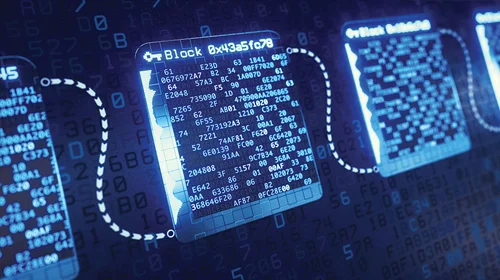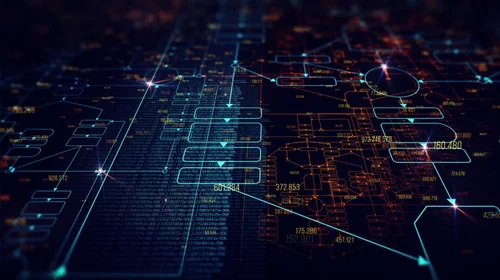The Role of Blockchain in Empowering Cryptocurrency


We all love stories, don’t we? When I was a little kid, my father told me an enchanting tale of how our universe would turn into a magical world. In that universe, there are robots, machines, and superhumans. My tiny brain was too overwhelmed to make fake scenarios about the fantasy world without knowing it was merely a story. After decades, I realized that nothing my father told me was a story but the magic of technology. In this ever-changing world, technological innovations are making everything possible. The miracles are overpowering everything, including education and finance. Among all the technological revolutions, we can see how blockchain and cryptocurrency stand out differently.
Imagine blockchain as a magical ledger, where every transaction was recorded in a way that everyone could see but none could change. Fantastic, right? In the same realm, we have cryptocurrencies, a digital currency that is secure, trustworthy, and free from the control of any single authority. And what will happen if the two innovations work together? They will change the world of finance forever.
Let’s dive deeper into this digital landscape where blockchain technology has become the backbone of cryptocurrencies. Follow me!

Before exploring the relationship between blockchain and cryptocurrencies, we need to analyze the two concepts separately.
Blockchain and cryptocurrency are not the same. It operates differently for different purposes. However, these are used interchangeably for effective transactions.
Blockchain is a decentralized platform where transactions can be done without intermediaries like banks. By decentralized means, it belongs completely to consumers and is not under any single authority. It has a chain of blocks, each containing a list of transactions. This digital ledger records transactions in a way no one can change, ensuring complete security. Once a transaction is recorded on the blockchain, it is permanent.
When a new transaction occurs, it is verified by a network of computers through complex cryptographic algorithms. The transaction is added to the block once it is validated. It is then linked to the previous transaction, thus forming a chain.
The key characteristic of blockchain is its resistance to hacking and tampering. Because of their decentralized nature, the databases are not controlled by a central authority. Instead, it is distributed across a network of computers. Once a transaction is added to the blockchain, it is difficult to alter.
Cryptocurrencies are digital currencies that use blockchain technology to operate. Cryptocurrency is like digital money that uses special codes to keep it safe. It works on networks that are not controlled by one central authority. Instead, many computers work together. People use it all over the world because it’s not tied to any government. When you do transactions with it, they’re written down on a public list, and they’re safe and kind of private. The first cryptocurrency, called Bitcoin, started in 2009. Since then, there have been lots of others, each with their own special characteristics. The value of cryptocurrencies can vary a lot, and it can be risky to invest in them. So it is crucial to be aware of the market’s high volatility and speculative character. People use them for different things, like buying stuff online and sending money across borders.
One of the most distinctive features of blockchain is its transparent nature. It acts as a super-clear window for transactions. Anyone can see it as a blockchain that records each transaction in a chain of blocks. This enhances trust and transparency.
Additionally, the special codes within the system make sure that once a transaction is recorded, it cannot be altered.
In traditional transactions, banks and payment companies act as intermediaries to help us with the process. In blockchain, there is no such intermediary. It allows users to exchange money with each other directly. This makes things faster and cheaper.
Imagine sending letters to each other without a post office. This is exactly what blockchain does for money.
Traditional systems involve a lot of steps, which can be slow and costly. But with the help of blockchain technology, you can transfer money across the border instantly. This is very helpful for people who are living far away from their families or who work in different countries.
With the expansion of blockchain technology, people who do not have access to banks could save, send, and invest money in the form of digital currencies. With just a phone and an internet connection, you can enter a world full of possibilities.
Conclusion
Blockchain is like an engine that drives cryptocurrencies. It makes them work better and changes the way we interact with money. In the future, we can expect the application of blockchain technology in many industries other than finance. So let us embrace this exciting technology and be a part of the shift towards a more inclusive world.
You can visit our website and learn more about blockchain technology in the upcoming blogs. Stay connected with us.